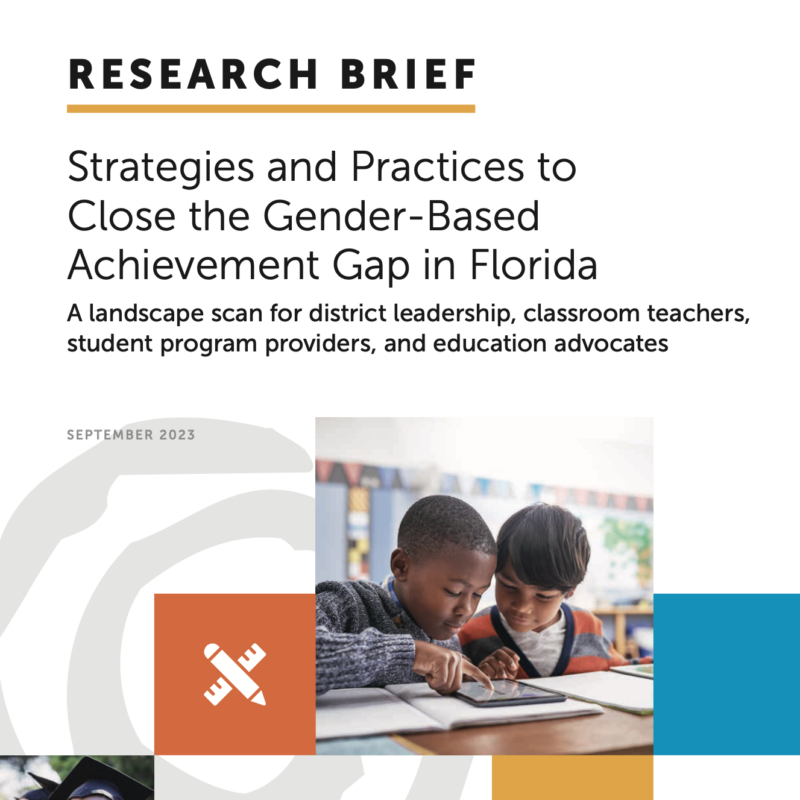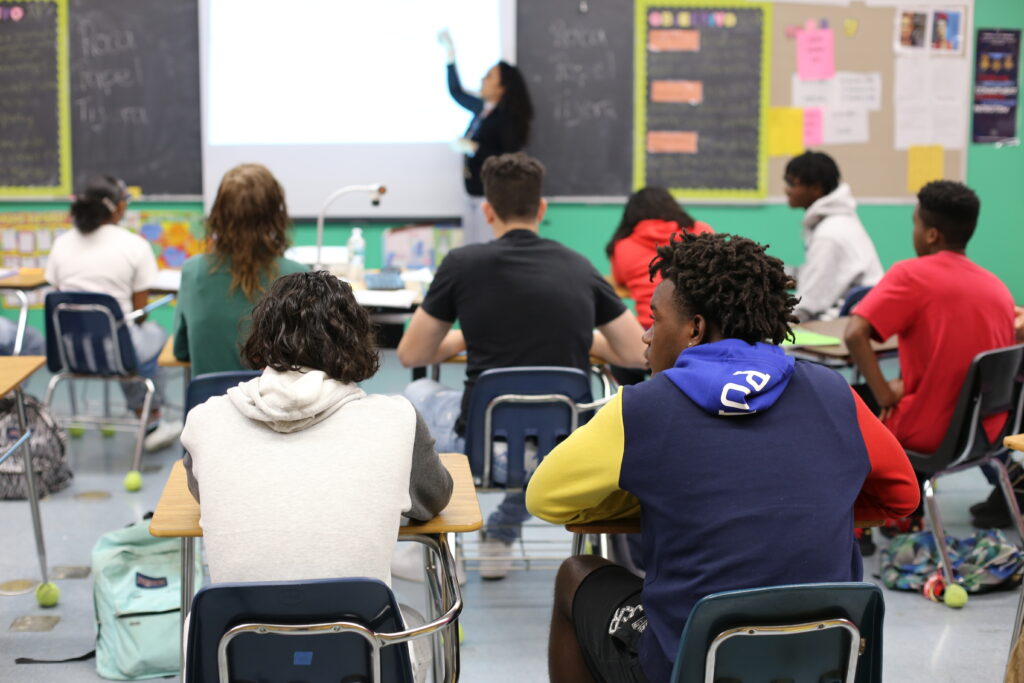Boys significantly lag behind girls in English Language Arts (ELA) throughout elementary and middle school in Florida, with the differences reaching up to 10 percentage points in the 2021-2022 school year. The gap is greatest among Black boys.
Those are some of the findings in the “Strategies and Practices to Close the Gender-Based Achievement Gap in Florida” research brief by Helios Education Foundation and WestEd. It examines English Language Arts (ELA) proficiency scores for elementary and middle school students in Florida.
The review of student achievement data shows Black boys have the lowest English test scores, with just 30% of them scoring proficiently in the ELA assessment during the 2021-2022 academic year. That’s compared with 43% of Black girls, 58% of white boys, and 67% of white girls.
High school graduation data also reflects gender achievement gaps. While 90% or higher of female students of all races graduated in 2020–2021, along with 97% of Asian boys and 90% of white boys, fewer than 90% of boys of all other races graduated. Black male students had the lowest graduation rate at 83%.
Failure to close these gaps will limit opportunities for students and, more broadly, the strength of the Florida workforce in an increasingly complex economy.
Strategies to Bridge the Gap
The research conducted by the Helios Education Foundation and WestEd highlights four evidence-based strategies shown to positively impact the overall achievement and success of boys and narrow achievement gaps:
- Provide academic support and classroom environments that acknowledge and accommodate the unique learning and developmental assets, differences, and needs of boys.
- Focus on building positive teacher-student and school-student relationships.
- Offer additional research-based supports that enhance boys’ learning, confidence, and opportunities to learn.
- Leverage student diversity as an asset to support teaching and learning.
Recognizing that action is required at the state, local, and school levels, the research brief also outlines specific recommendations for each.


